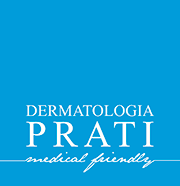Herpes labialis, etiology and definition
Herpes is a skininfection with a generally cephalic site, predominantly at the level of the lips caused primarily byHerpes Simplex Virus-1 (abbreviation HSV-1) and more rarely byHerpes Simplex Virus-2(HSV-2 usually causes genital herpes).
The infection occurs, at least once in the lifetime of 90 percent of people, with the appearance of small pustules or blisters on the lips almost suddenly, preceded some times by a burning and itching sensation. After a very short time, the vesicles, distributed in clusters, rupture, creating yellowish crusts around the lesion, which will disappear after a maximum of 10-15 days.
Unfortunately, even after the blisters and scabs disappear, the virus will not leave the body but will remain dormant in nerve structures in the area, the sensory ganglia.
Cold sores are transmissible through contact or by objects previously contaminated with the infected person’s saliva (cutlery, glasses, lipstick).
Herpes causes and risk factors
Having established that the main cause of cold sores isHSV-1, there are several factors in daily life that can expose you more to contamination:
- poor personal hygiene
- Shared use of objects (glasses, lipsticks, cutlery)
- sudden lowering of immune defenses
- oral sex
Despite the attention given to each of the previous risk factors, you may contract the virus, and even after the infection is eliminated, it will continue to be present in your body waiting for an ‘awakening’.
Its reappearance could be triggered by:
- Change in hormonal status (pregnancy)
- Prolonged exposure to the sun without any kind of protection (in conjunction with the menstrual cycle in women)
- Suboptimal physical condition (perhaps as a result of illness or surgery)
- immunodepression
- mental and physical stress
Does semi-permanent lip tattooing cause herpes? Do lips swell after dermopigmentation?
Absolutely not. With visage tattooing on the lips, herpes may return if already present in the body due to skin stress on the sensitive mucosal part, but it is never directly generated by the dermopigmentation treatment.
The awakening of a herpes after treatment is a very natural reaction of the body that can be contained with medical prevention, with specific products. In no way should the herpes-affected area be touched or worse yet teased with the lips or anything else.
Symptoms
As mentioned above, the characterizing symptoms ofherpes simplex are small blisters that affect the lips (but sometimes also the eyes and nose) and the inside of the mouth going on to inflame the gum area as well.
The vesicles appear very small at first, shiny and containing fluid, slowly growing and even reaching nearly 5 mm in size. Following this enlargement there will be a clouding of the fluid contained within them, causing the vesicles to turn into actual pustules.
The pustules will dry out over days and become covered with yellowish scabs, which, at the end of the infection, will fall off, rarely leaving a small scar.
In weak patients or children sometimes there are some pre-vesicle symptoms such as pharyngitis, fever, and gingivo-stomatitis (infection of the oral cavity and gums).
How to treat cold sores
First of all, it would be best to always prevent the virus by being alert to all the risk factors listed above.
In case the infection is now in progress, it is advisable:
- do not scratch the reddened area
- don’t scratch the pustules
- don’t scratch the scabs
- wash hands very often
Should the infection last longer than expected(10-15 days), it is advisable to contact a dermatologist who will competently analyze the situation.
A dermatologist, made aware of the current situation of the infection but also of the recurrence (in the case of a patient already affected by the virus in the past), will surely be able to recognize the type of herpes simplex, the advancement of the infection, and prescribe the appropriate antivirals for the treatment ofcold sores.
If you would like more information about cold sores and treatment of the infection, please visit our dermatology office at 212 Via Cola di Rienzo, Rome (Prati area) or contact us and schedule a consultation.

